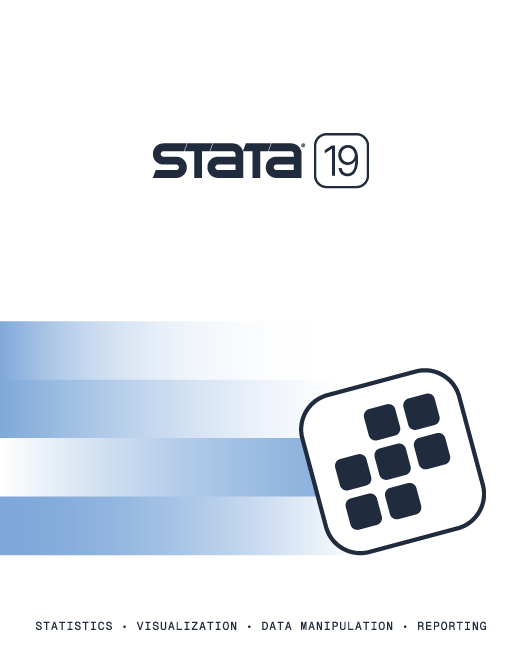
| 9:30–10:30 | Heterogeneous difference in differences in Stata
Abstract:
We are interested in obtaining causal answers to our research questions.
We want the effect of a treatment on an outcome. When studying causal
questions with repeated cross-sections or panel data, it is common for
treatment timing to differ across groups.
When this occurs, treatment effects may be heterogeneous across groups
and time. Failing to account for effect heterogeneity will lead to
inconsistent estimates. We show how to use heterogeneous difference in
differences to estimate, visualize, infer, and aggregate heterogeneous
treatment effects.
Additional information:
Di Liu
StataCorp LLC
|
| 10:50–12:00 | Control variables in causal inference: The good and the bad
Abstract:
The traditional concept of "the more control variables, the
higher the accuracy of model identification" has misled many
people.
This presentation is based on the theory of causal
identification, uses causal diagrams to explain "good control
variables" and "bad control variables" and defines the
conditions for "good control variables", and then uses the
classic application examples in the top issue to illustrate the
control variables. This presentation discusses issues of selection,
measurement, robustness testing, and sensitivity analysis.
Additional information:
Lian Yujun
Sun Yat-sen University
|
| 2:00–3:15 | Double machine learning and Stata application
Abstract:
Traditional methods for estimating treatment effects generally
assume strong functional forms and are only applicable when the
covariates are low-dimensional data.
However, using machine learning methods directly often leads to
"regularization bias". The recently emerging "double/debiased
machine learning" provides an effective estimation method
without assuming a functional form and is suitable for
high-dimensional data. This presentation will introduce the
principles of dual machine learning in a simple way and
demonstrate the corresponding Stata operations with classic
cases.
Additional information:
Chen Qiang
Shandong University
|
| 3:35–4:35 | DID placebo test and Stata application
Abstract:
The parallel trends assumption on which
differences in differences (DID) relies is inherently
untestable.
For this reason, recent empirical studies have increasingly used
placebo tests to further examine the robustness of the estimated
results. This presentation will comprehensively sort out various
types of DID placebo tests and classic cases and introduce the
new Stata command didplacebo for DID placebo tests. This
command can automatically perform the time and space placebo
test of DID and provide a visual display.
Additional information:
Yan Guanpeng
Shandong University
|
| 4:35–5:20 | Open panel discussion with Stata developers
Contribute to the Stata
community by sharing your feedback with StataCorp's developers. From feature
improvements to bug fixes and new ways to analyze data, we want to hear how
Stata can be made better for our users.
|
| 9:00–10:10 | Create customizable tables
Abstract:
Customizable tables allow researchers to effectively and clearly
present their analysis results to others.
Stata versions 17 and 18 introduced commands such as table,
collect, etable, and dtable
to help users create standard and customizable tables using results
from Stata's estimation and postestimation commands, summary
statistics, and hypothesis testing. Additionally, those tables
can be easily exported to various file formats, including
Microsoft Word/Excel, PDF, LaTeX, and HTML. In this
presentation, I will show you how to create various customized
tables conveniently using those commands.
Additional information:
Zhao Xu
StataCorp LLC
|
| 10:30–12:00 | Stata and accounting research: Capital market openness and financial report robustness
Abstract:
Based on the exogenous policy changes implemented by the
“Shanghai–Hong Kong Stock Connect”, this presentation explores
the impact and mechanism of the opening of the capital market on
the accounting conservatism of enterprises.
The research found that the implementation of the Shanghai–Hong
Kong Stock Connect has significantly reduced the accounting
conservatism of the target enterprise and increased the introduction of
foreign investors.
The impact of “communication” on the reduction of
accounting conservatism is more significant in low-governance
and state-owned enterprises. It is comprehensively shown that
the implementation of the Shanghai–Hong Kong Stock Connect will
affect a company's decision-making function through regulatory
changes and the introduction of foreign investors, which will
affect a company's disclosure strategy.
Additional information:
Liang Shangkun
Central University of Finance and Economics
|
| 2:00–3:00 | Intrumental variables quantile regression
Abstract:
When we want to study the effects of covariates on the different
quantiles of the outcome, we use quantile regression.
However, the traditional quantile regression is inconsistent when
a covariate is endogenous. We introduce the Stata command
ivqregress, which models the quantiles of the outcome and,
at the same time, controls for problems that arise from
endogeneity. We show how to use the suite of IV quantile
regresison to estimate, visualize, and infer features of the
outcome distribution.
<
Additional information:
Di Liu
StataCorp LLC
|
| 3:30–5:00 | Comparative review of intervention time-series analysis and program package
Abstract:
Intervention time-series analysis (ITSA) can describe the
dynamic changes of policy effects, and the flexibility of policy
effects is the characteristic of ITSA that distinguishes it from
experimental designs such as DID and RD.
This presentation reviews two classes of models for intervention
time-series analysis: linear regression models with
deterministic trends and transfer function ARIMA models. I also
introduce the functions and features of Stata's itsa
command and compare it with Mathematica's itsa package.
Additional information:
Qunyong Wang
Nankai University
|
Create customizable tables

Zhao Xu
Principal Software Engineer
Heterogeneous difference in differences in Stata, and
Instrumental variable quantile regression

Di Liu
Principal Econometrician

The 2023 Chinese Stata Conference is organized by Beijing Uone Info & Tech Co., Ltd. (Uone-Tech), an official reseller of Stata in China.
View the proceedings of previous Stata Conferences and Users Group meetings.